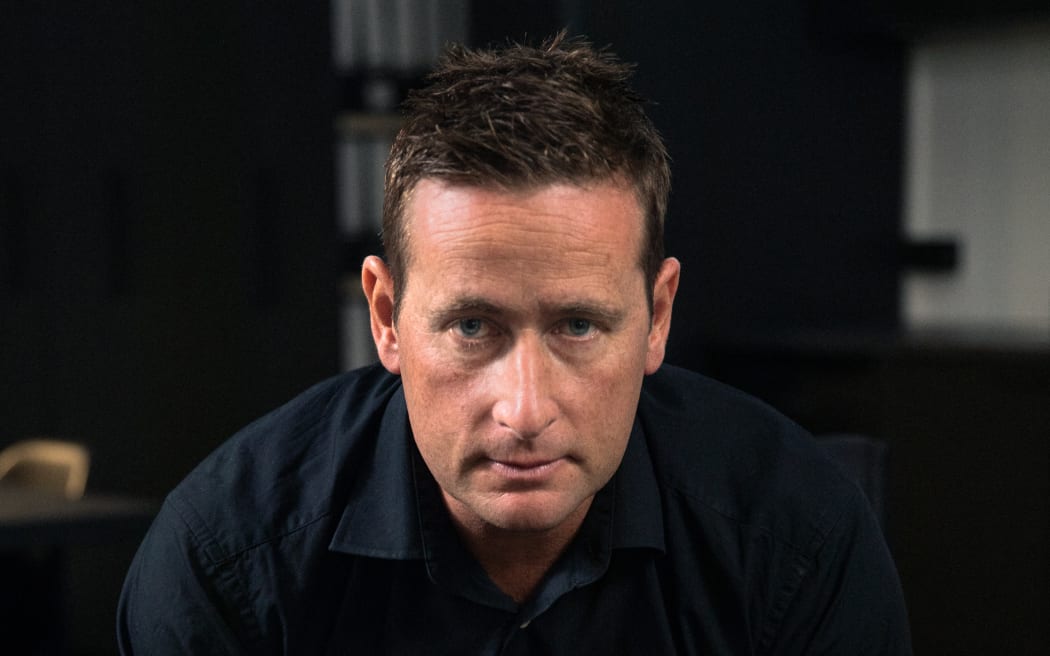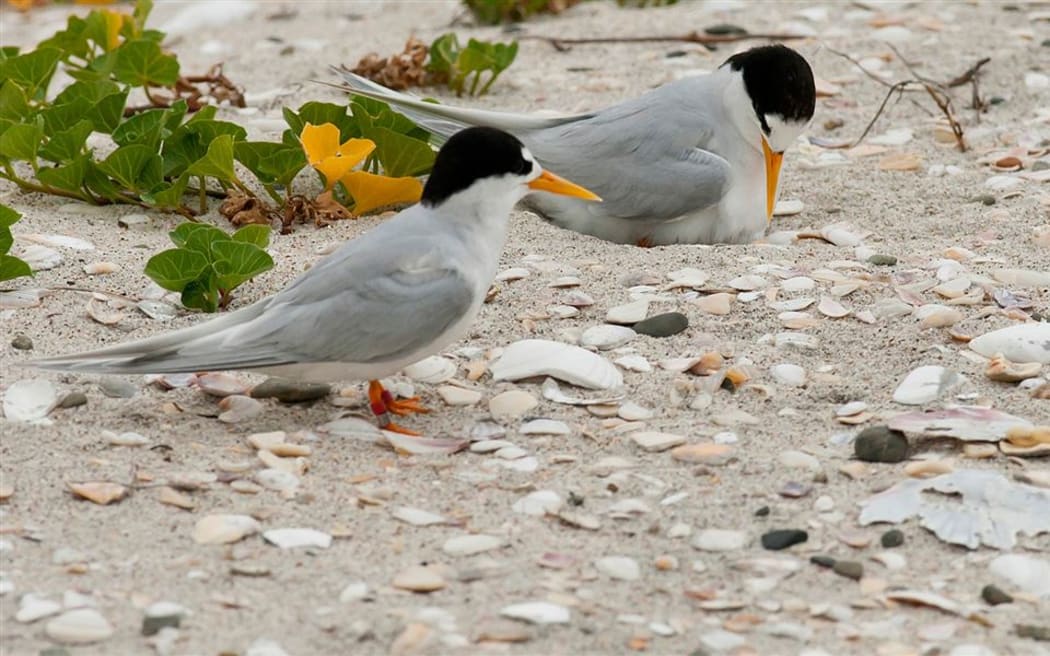
Tommy Walker
BANGKOK —
A new human rights report released Monday said authorities in Cambodia used the COVID-19 pandemic as a distraction to crack down on independent unions and activist workers.
The 97-page report by Human Rights Watch, titled "Only 'Instant Noodle' Unions Survive," documents how authorities in Cambodia allowed employers to bypass labor regulations and commit unfair practices that are illegal in Cambodian and international law. The advocacy group headquartered in New York City interviewed over 30 independent union leaders and members in Cambodia's garment and tourism sector to compile the report.

"The Cambodian government and unscrupulous employers used the COVID-19 pandemic as an excuse to further restrict independent unions instead of protecting worker welfare and rights at a desperate time," Phil Robertson, deputy Asian director of HRW, said in a press release sent to VOA.
During the pandemic, hundreds of thousands from Cambodia's garment and tourism sectors were laid off, leading to desperate times that included financial uncertainty, mass relocation and struggles for daily necessities including food, the report said.
But little was done to support these workers by unions registered under Cambodia's Trade Union Law, it added.
Trade unions controlled by employers or linked to the Cambodian government were able to register under Cambodia's Trade Union Law with ease, while on the contrary for independent unions, the process of being approved is tiresome and often includes lengthy requirements for registration.
"Only Instant Noodles Unions Survive," is a nickname given by independent unions, implying it is as easy as making instant noodles for the approved unions to be registered.
VOA contacted the Ministry of Foreign Affairs Cambodia requesting comment on the HRW report but has gotten no response so far.
Robertson slammed the suppression of independent trade unions during a press conference at the Foreign Correspondents' Club in Thailand, Bangkok.
"These are the unions that didn't lift a finger to protect workers during that time of crisis," he said, adding, "yet, it was precisely the independent unions who were trying to actually help, bore a brunt of a crackdown led by the Cambodia government or employers, who cynically saw the COVID pandemic to crush and get rid of independent unions once and for all."
Tourism sector crackdown
A crackdown at NagaWorld casino, run by Hong Kong-listed Nagacorp in Cambodia's capital Phnom Penh, also saw workers go on strike after the casino laid off 1,329 workers during the pandemic. However, authorities soon designated the demonstrations as "illegal" for breaking a curfew imposed to social distance and other COVID-19 measures at the time, as the reason to remove people protesting and confine them for virus testing.
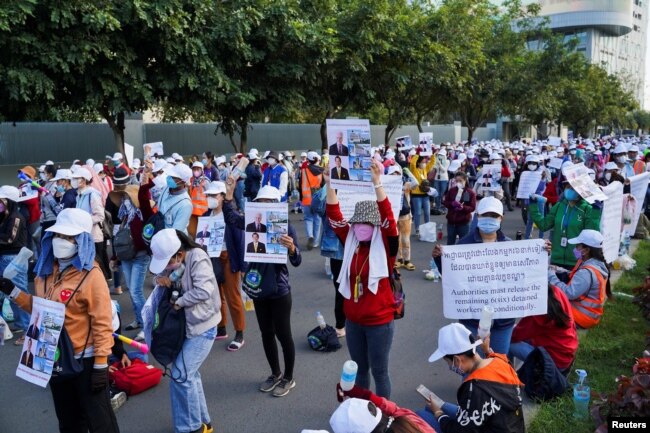
Chimm Sithar, the president of the Labor Rights Supported Union of Khmer Employees, protested the dismissal of hundreds of workers at the NagaWorld casino. But she says she was arrested by authorities and charged with "incitement to commit a felony" and was held in pre-trial detention for 74 days. Now she has been released on bail, but her charges are still pending.
"The authorities try to scare us. I am not scared to be rearrested. Even when I am not in prison, I cannot freely exercise my right to be a union leader. I cannot give up because of the threat of prison. I have to stand up for workers' rights," Sithar said in April 2022.
Garment industry
Cambodia relies heavily on its garment industry, accounting for around 80% of the country's exports, with the industry making up of approximately 16% of the country's GDP in 2016.
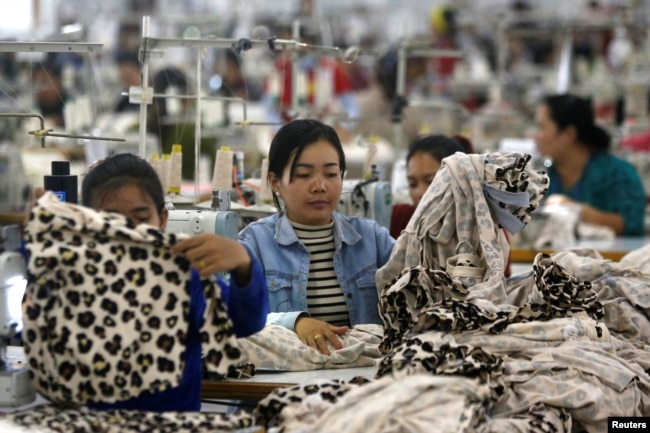
But the industry has been hit hard in recent years.
The EU, Cambodia's biggest trading partner that accounted for 45% exports in 2018, partially withdrew its agreement with Cambodia under the "Everything but Arms," tariff-free trade agreement, accounting for a 20% loss for Cambodia. This came after the EU cited the country's poor human rights record and lack of democratic progress, including the participation ban on Cambodia's main opposition party leading up to the General Elections 2018. This led to a victory for Prime Minister Hun Sen's long-ruling Cambodian People's Party in every contested government seat.
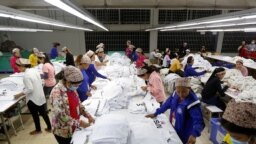
Cambodian Garment Workers Struggle After EU Withdraws Trade Perks
Labor standards
Cambodia has long been criticized for its poor labor standards and human rights violation. But strikes over conditions and pay often have been met with violence and clashes with police.
In recent years, global fashion brands that operate in Cambodia, including Adidas and Puma, have urged Prime Minister Hun Sen to amend its trade union law and drop charges against union leaders.
Cambodia's garment industry is worth around $7 billion, with over 700,000 workers, the vast majority of whom are female, and earn a basic wage of $190 per month.
In September, the Cambodian government has increased the country's minimum wage to $200 a month. But Yang Sophorn, the president of Cambodian Alliance of Trade Unions, or CATU, told Radio Free Asia that she was sad that the increase didn't match the rise in inflation.
"As labor rights in Cambodia backslide, the European Union, United States, and other trade partners should use their leverage and increase their pressure on the









